Human brain atals across lifespan
Table of contents
Lifespan deep white matter tract atlas
The brain’s white matter (WM) evolves at a rapid pace during childhood and adolescence, stabilizes during young and middle adulthood, and degenerates in late adulthood. Here, we introduce a set of white matter tract atlases spanning birth to 100 years of age, covering 215 WM bundles to facilitate quantification of WM changes across the entire human lifespan. To our knowledge, this is to date the most comprehensive set of atlases, covering the largest time span with the largest number of WM bundles.
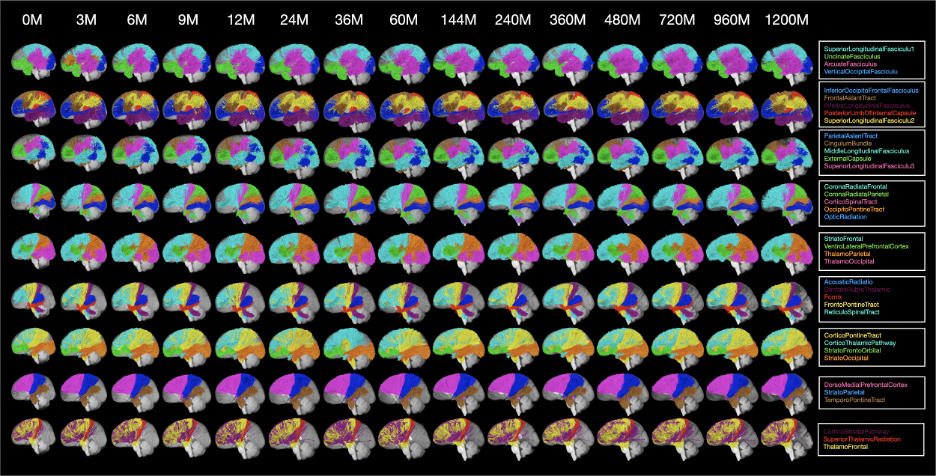
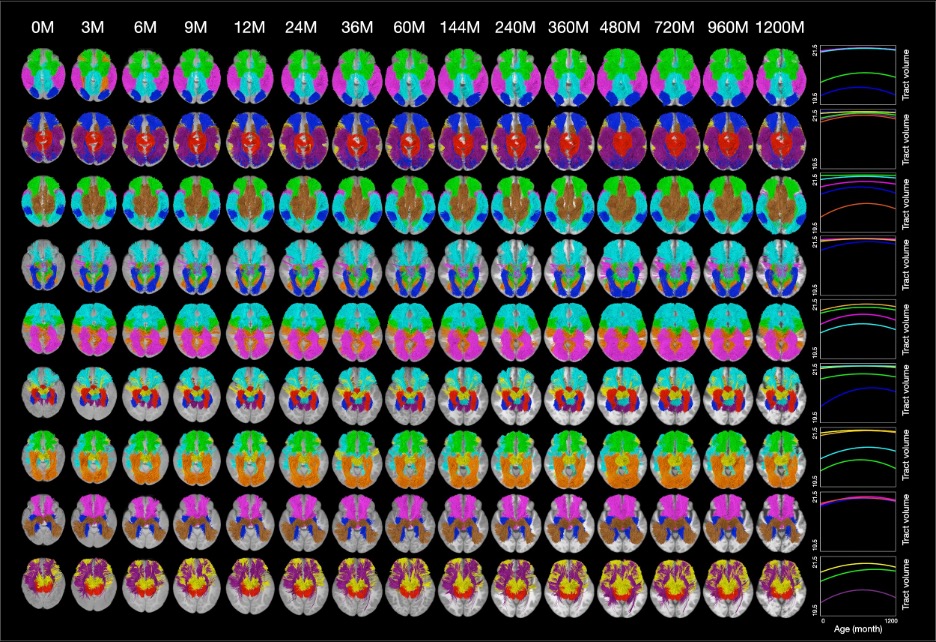
Wu, Y., Ahmad, S., Lin, W. & Yap, P. T. (2021). White Matter Tract Atlases of a Century of Human Life Organization for Human Brain Mapping (OHBM) Annual Meeting (Merit Abstract Award)
Lifespan superficial white matter tract atlas
The brain’s deep and superficial white matter (WM) evolves at a rapid pace during childhood and adolescence, stabilizes during young and middle adulthood, and degenerates in late adulthood. In the human brain, the superficial white matter (SWM) has a much higher proportion of interstitial neurons than the deep white matter (DWM), and these neurons play an important role in the genesis and maturation of the folded cortex. Unlike DWM, little is known about SWM fasciculi, owing to the challenges involved in the reconstruction of these fasciculi due to their small size and close proximity to the cortex. Here, we introduce for the first time a set of SWM tract atlases covering 1164 SWM bundles, spanning birth to 100 years of age. To our knowledge, this is to date the most comprehensive set of atlases that cover the largest time span and the largest number of SWM bundles.
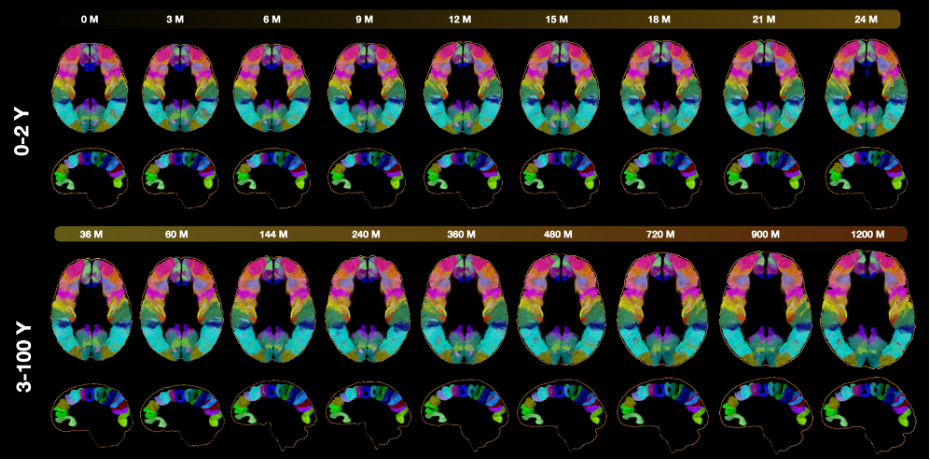
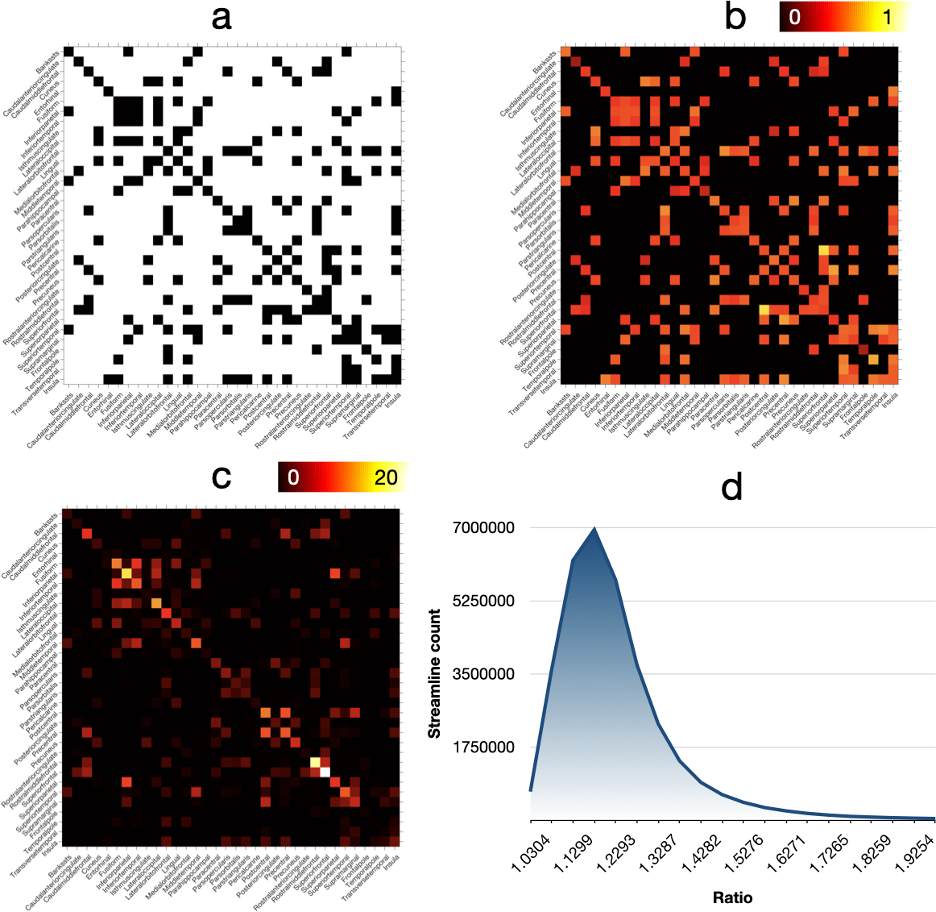
Wu, Y., Ahmad, S., Lyu, W. & Yap, P. T. (2022). Superficial White Matter Tract Atlases Across the Human Lifespan Organization for Human Brain Mapping (OHBM) Annual Meeting
Lifespan intravoxel architecture atlas
Human brain atlases integrate multifaceted features of the brain in common coordinate spaces, allowing systematic investigation of brain development and maturation. Here, we introduce a set of intravoxel architecture atlases (IAA) covering changes of tissue microstructure from birth to 100 years of age.
The human brain is arguably the most complex organ in the body, yet its macroscopic layout is nearly complete at the time of term birth1. Postnatally, the brain develops rapidly from infancy through adolescence, stabilizes during young and middle adulthood, and degenerates in late adulthood. The precise charting of human brain development and aging is now possible due to data collected via the Lifespan Human Connectome Project (HCP), which includes (i) Baby Connectome Project (BCP2, 0-5 years); (ii) HCP Development (HCP-D3, 6-21 years); (iii) HCP Young Adult (HCP-YA4, 22-37 years); and (iv) HCP Aging (HCP-A5, 36-100 years). Leveraging these unique datasets, Ahmad et al.6 constructed a set of anatomical atlases covering the entire human lifespan from birth to 100 years of age. Although these atlases characterize the structural growth of the brain, lifespan atlases characterizing developmental trajectories of tissue microstructure remain elusive.
Here, we introduce a set of intravoxel architecture atlases (IAA) that cover birth to 100 years of age, characterizing (i) isotropic restricted diffusion; (ii) free water; (iii) anisotropic restricted diffusion; and (iv) fiber orientation distribution functions to facilitate quantification of microstructural changes across the human lifespan. To our knowledge, this is to date the first work on constructing lifespan intravoxel architecture atlases, providing a complete picture of microstructural development in 100 years of postnatal life.
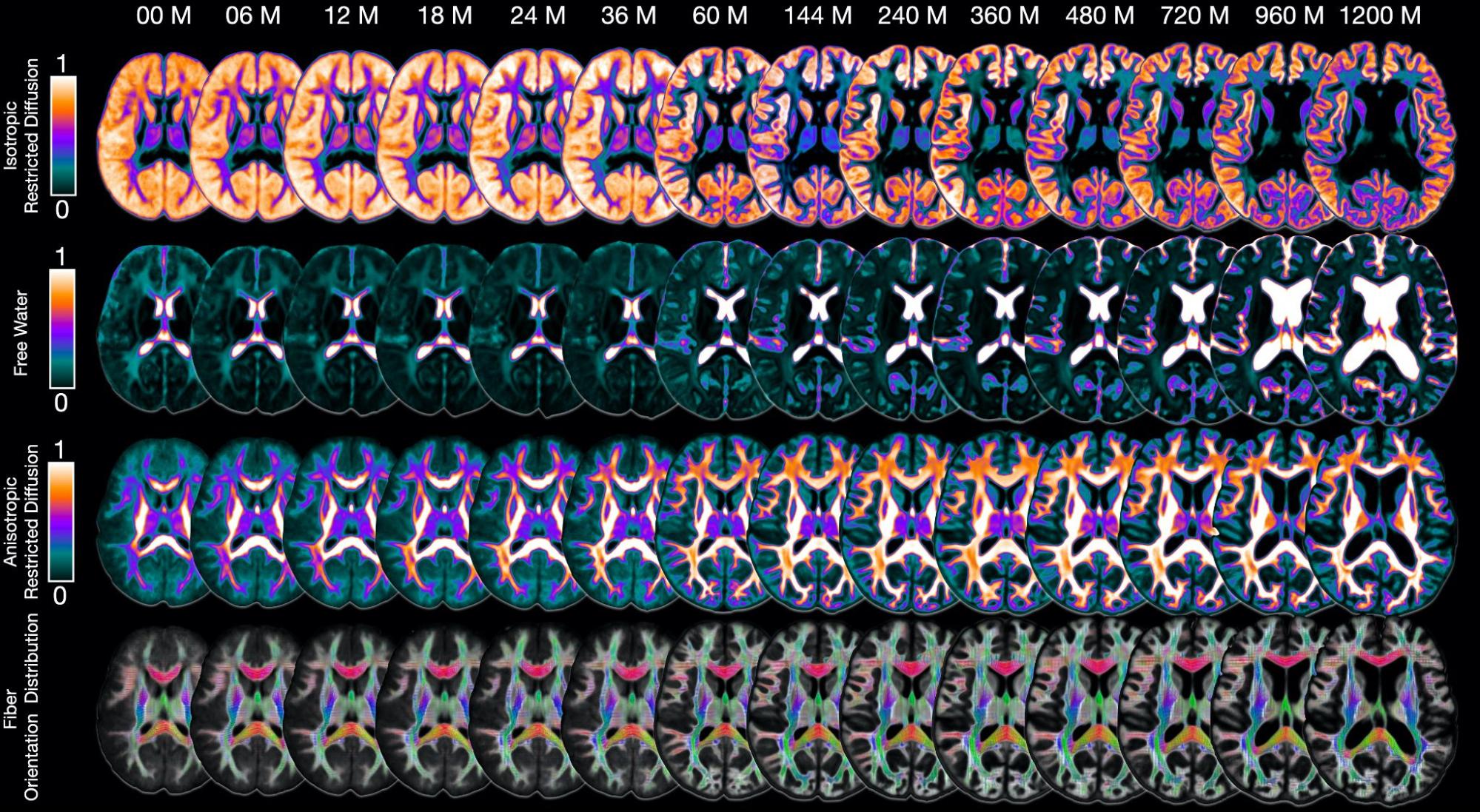


Wu, Y., Ahmad, S. & Yap, P. T. (2022). Intravoxel Architecture Atlases (IAA) Across the Human Lifespan Proceedings of the International Society of Magnetic Resonance in Medicine (ISMRM)
Lifespan whole brain parcellation
Subdividing the human brain into functionally distinct but spatially contiguous areas is important for understanding the brain structure and function (Han et al., 2018; Yan, Yang and Zhao, 2021). However, population-level brain parcellation defined at a single time-point is insufficient to accommodate for differences in structure, function, and connectivity across the lifespan. Here, we introduce the first set of age-specific whole-brain parcellations spanning birth to 100 years of age, covering multiple anatomical scales to facilitate quantification of regional changes across the entire human lifespan.
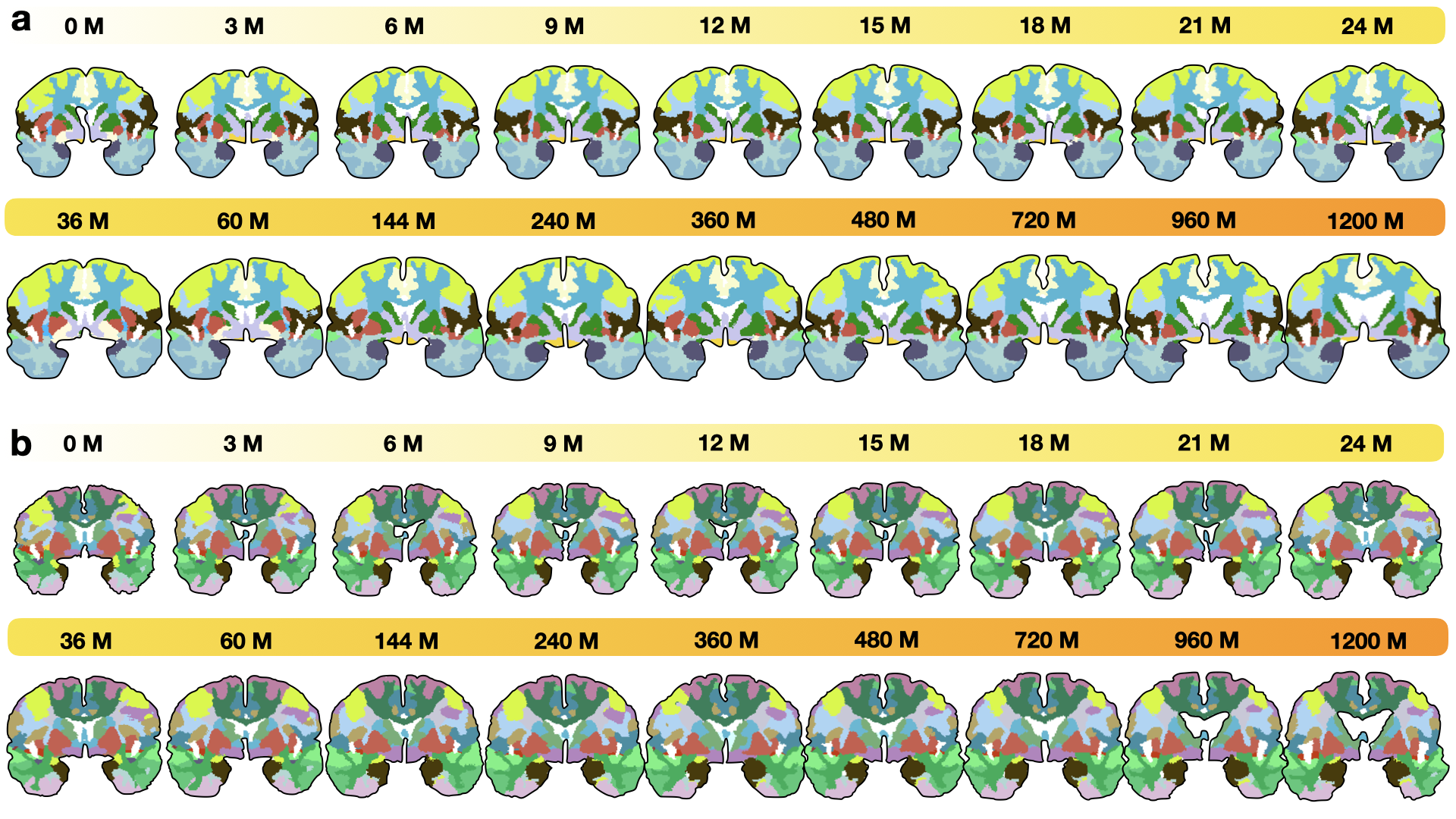
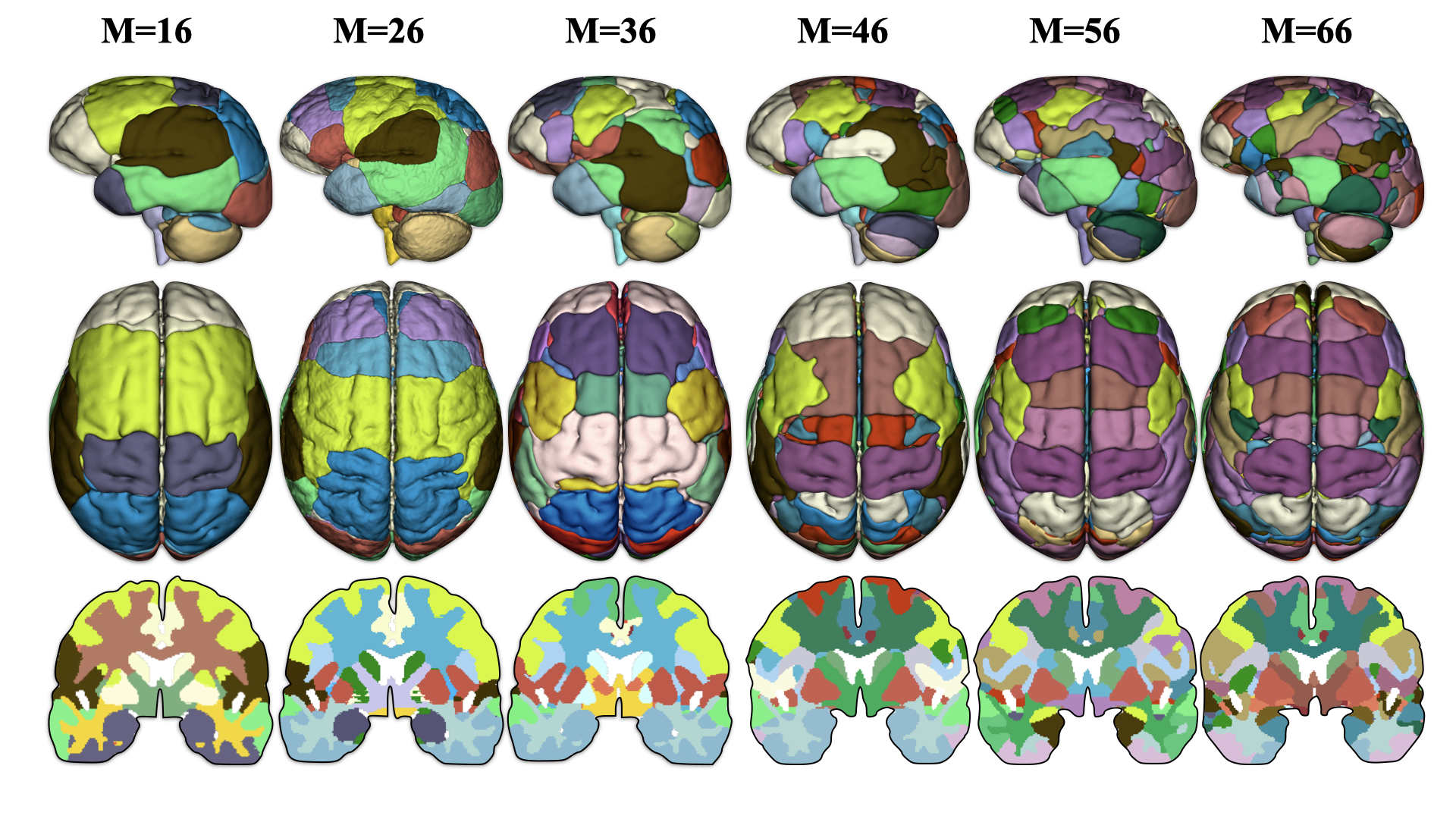
Wu, Y., Ahmad, S., Lyu W. & Yap, P. T. (2022). Whole Brain Parcellation Over the Human Lifespan Organization for Human Brain Mapping (OHBM) Annual Meeting